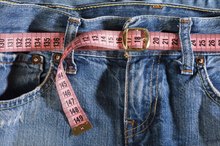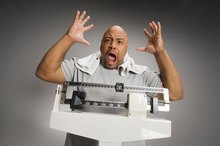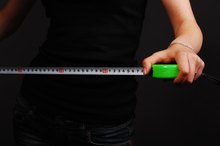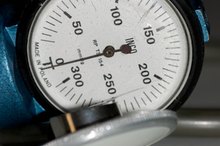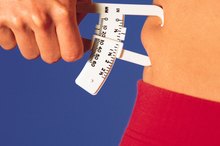What does fact checked mean?
At Healthfully, we strive to deliver objective content that is accurate and up-to-date. Our team periodically reviews articles in order to ensure content quality. The sources cited below consist of evidence from peer-reviewed journals, prominent medical organizations, academic associations, and government data.
- National Heart, Lung & Blood Institute: Calculate Your Body Mass Index
- National Heart, Lung & Blood Institute: Calculate Your Body Mass Index
- Centers for Disease Control and Prevention: About BMI for Adults
The information contained on this site is for informational purposes only, and should not be used as a substitute for the advice of a professional health care provider. Please check with the appropriate physician regarding health questions and concerns. Although we strive to deliver accurate and up-to-date information, no guarantee to that effect is made.
Is Getting to a Size 0 a Good Goal?
In a culture obsessed with weight and fat, it's not unusual to feel pressured to be a certain size. For women's sizes, a 0 is considered a thin ideal by many -- a size achieved by beautiful movie stars and famous performers. What people often fail to understand, however, is that these women have jobs that place them under extreme pressure to be thin, and many of them are grossly underweight and unhealthy. Before you make it a goal to be a size 0, there are a few things you should consider.
What Is a Size 0?
Although manufacturers' sizes differ, the measurements for a U.S. size 0 clothing are usually a 24- to 25-inch waist, 32- to 33-inch bust and 35- to 36-inch hips. The problem with trying to be a certain size, regardless of your size goal, is that there is no true universal standard for clothing sizes. To complicate matters, many clothing makers utilize "vanity sizing," a tactic to increase sales by labeling clothes with sizes smaller than they actually are. So to say you want to fit into a size 0 is pretty arbitrary, as sizing can vary dramatically between different manufacturers.
- Although manufacturers' sizes differ, the measurements for a U.S. size 0 clothing are usually a 24- to 25-inch waist, 32- to 33-inch bust and 35- to 36-inch hips.
- The problem with trying to be a certain size, regardless of your size goal, is that there is no true universal standard for clothing sizes.
Differences In Body Shapes
Body Frame & Ideal Body Weight
Learn More
It's important to remember that people come in all different shapes and sizes. A person who's naturally thin and petite with a tiny frame may fit into a size 0 with no effort, as that's the size that they are meant to be. However, someone who's 6-feet tall with a medium frame would likely have to be extremely underweight to wear a size 0.
Figuring Out Your Ideal Size
The size of your body when you're at a healthy weight and feel strong and fit is the size you should wear -- whether that's a 0 or a 10. Instead of focusing on the size of your jeans, gauge your ideal size by body fat percentage or body mass index 3. For women between the ages of 20 and 40, 19 to 26 percent body fat is ideal. For men in the same age range, 10 to 20 percent should be the goal. You can calculate your BMI by dividing your weight in kilograms by your height in meters squared. A BMI between 18.5 and 24.9 is considered normal.
- The size of your body when you're at a healthy weight and feel strong and fit is the size you should wear -- whether that's a 0 or a 10.
A Word on Eating Disorders
Healthy Waist Size & BMI
Learn More
Obsessions with weight and size can lead to dangerous eating disorders 5. Both women and men can fall victim to such deadly disorders, which include anorexia, bulimia and binge eating disorder. If you find yourself obsessing over how much you eat, how much you weigh or the size of your clothes, speak with someone you trust about getting help. Left untreated, eating disorders can have devastating consequences, including malnourishment, organ failure and death. Focus on loving and appreciating your body for being strong and fit, rather than trying to force yourself to be a size that your body isn't meant to be.
- Obsessions with weight and size can lead to dangerous eating disorders 5.
- Both women and men can fall victim to such deadly disorders, which include anorexia, bulimia and binge eating disorder.
Related Articles
References
Writer Bio
Jessica Bell has been working in the health and fitness industry since 2002. She has served as a personal trainer and group fitness instructor. Bell holds an M.A. in communications and a B.A. in English.

